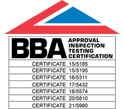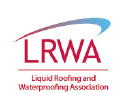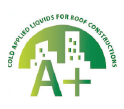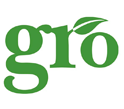Call us on
+44 (0)1268 777871Exceptional blue roof solutions - the total technical design service
Proteus Waterproofing is one of the few companies in the UK able to deliver the full design package together with advanced blue roof solutions specifically tailored for architects and specifiers. We have an enviable reputation for transforming architectural ideas into sustainable realities, offering a seamless experience from design to final delivery.
An extensive range of services
Proteus Waterproofing’s design package includes a full range of technical support from comprehensive site surveys and in-depth reports to bespoke specification services, advanced roof design solutions, and robust office back up.
Our technical services commence with thorough site surveys complemented by in depth reports, ensuring a detailed understanding of every project requirement.
We also utilise state-of-the-art drones for inspections in restricted areas and offer onsite visits and training as needed, ensuring that no detail is overlooked at any stage of the project.
Roof design solutions
Proteus Waterproofing takes pride in offering comprehensive blue roof design services that encompass precise U-Value calculations, condensation risk analysis, wind uplift, and drainage calculations. We provide a range of flat and tapered insulation schemes expertly designed to meet Part B Fire regulations. Our bespoke roof design drawings and board schedules, backed by our presence on NBS Source and NBS Chorus, ensure seamless project specification support at all times.
Water Management:
Blue roofs feature specific flow restrictor outlets to meet the required water discharge rate and are engineered to efficiently drain over a specified retention period. Overflow mechanisms are incorporated into every design to avoid water ingress during extreme weather conditions, ensuring effective water management.
Proteus will design, specify, quote, deliver, install [via our network of approved installers] and provide a guarantee on a wide range of blue roofs
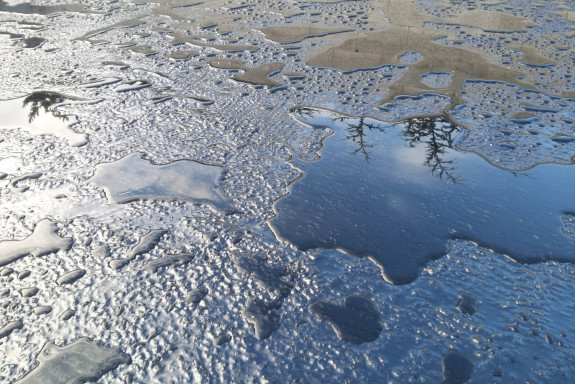
Insulation and thermal considerations
Designing an efficient blue roof requires careful consideration of insulation, especially in the case of inverted warm roofs, to mitigate the thermal impact of water penetrating the insulation and reaching the waterproofing layer. This is a key part of our design service.
Structural integrity
Attention is paid to limiting penetrations of the waterproofing layer to maintain the integrity of the system in blue roofs. Protrusions and penetrations, including those between insulation and the water attenuation chamber, are sealed meticulously. We can also include Bio-solar systems, that can be incorporated into a design to ensure all components interact correctly
Quality and value
Our technical sales team is ready to deliver quality and value for money at all times. We provide bespoke specification services, project pricing, and precise estimating tools necessary for each contract. These are backed by detailed case studies and product information to support your decision-making process.
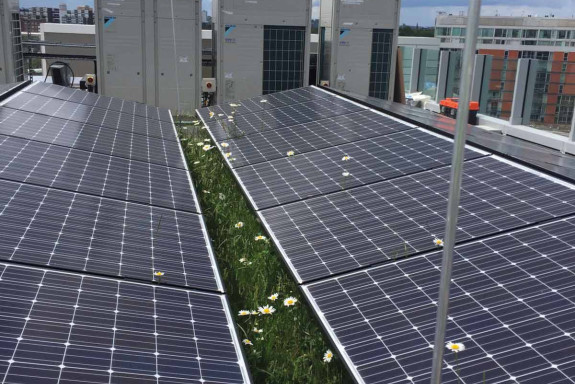
Reliable partners
Proteus Waterproofing ensures that a team of friendly and knowledgeable staff members are always available to answer any questions, both in our office and warehouse. This commitment translates into next-day delivery for orders placed by 11 am (subject to stock availability) and seamless facilitation of collections, ensuring your materials reach you promptly and in perfect condition.
Guarantees and warranties
We stand behind the quality of our work with comprehensive guarantees covering both labour and materials for up to 25 years, tailored to each specific project and its duration. As an additional layer of assurance, we offer the option for an independent pre-paid insurance-backed guarantee, providing you with peace of mind and confidence in your choice.
Certifications:
Our comprehensive accreditations include ISO 9001, ISO 14001, FORS Gold and Safe2Torch. All our waterproofing systems are fully BBA certified and we are NBS Specification Writing Partner. In addition, we are members of LRWA, GRO, CORC and the NFRC.
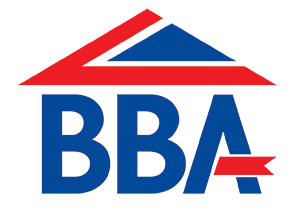
View our Blue roofs products
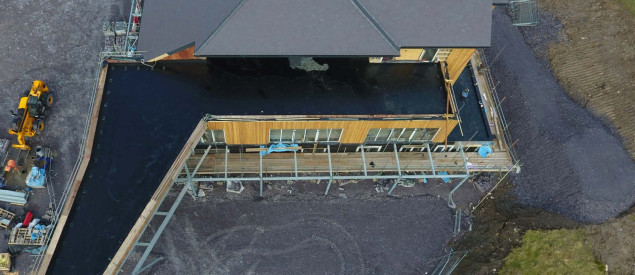
Cold Melt®
Cold Melt® incorporates recycled rubber crumb and other organically grown products to create an elastomeric, seamless, cold applied membrane that can be applied to a wide range of substrates including concrete, asphalt and timber.
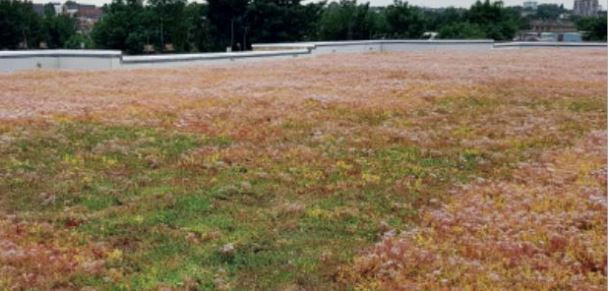
Pro-Living®
Proteus Waterproofing offers a range of green, brown and blue roofs. Pro-Living® roofs can provide ecological benefits, offering an effective and practical use of space.
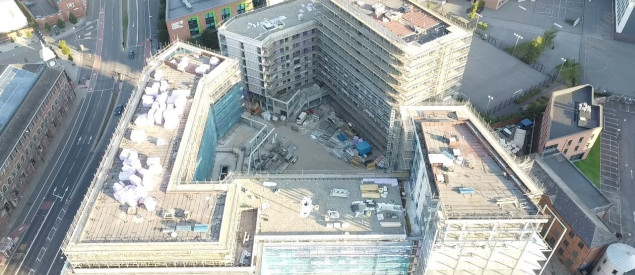
Proteus Hot Melt®
Proteus Hot Melt® delivers fast, economical and reliable waterproofing solutions which are particularly suitable for large flat roof decks.
FAQs
-
What is a blue roof?
A blue roof is a roof that is designed to store and slowly release rainwater. Blue roofs typically consist of a waterproof membrane, a drainage layer and can include a growing medium. The growing medium can be planted with vegetation or left bare.
-
How does a blue roof work?
When it rains, the blue roof stores rainwater in the drainage layer. The rainwater is then slowly released over time, helping to reduce stormwater runoff and flooding. Blue roofs can also help to improve air quality and reduce energy consumption.
-
What are the benefits of having a blue roof?
There are many benefits to having a blue roof, including:
• Blue roofs assist in rainwater storage, contributing to decreased stormwater runoff and potential flood mitigation. This can help to protect property and infrastructure from damage
• Blue roofs help to filter pollutants from the air, improving air quality
• They can help to insulate buildings, reducing the need for heating and cooling. This can lead to significant energy savings
• Blue roofs help to protect roofs from the elements, potentially prolonging roof durability. This can save money on roof repairs and replacements
• Blue roofs can provide habitat for birds, insects, and other wildlife, increasing biodiversity
-
How much does a blue roof cost?
The cost of a blue roof will vary depending on the size of the roof, the materials used, and the complexity of the installation. Blue roofs may have a higher initial cost compared to traditional roofs, however, their range of benefits can provide long-term value.
-
Can a blue roof be installed on my existing building?
Yes, a blue roof can be installed on most existing buildings. However, it is important to have your roof inspected by a qualified professional to ensure that it can support the weight of a blue roof.
-
How much maintenance does a blue roof require?
Blue roofs generally require low maintenance, typically only needing to be inspected once or twice a year. Any growing medium may need to be watered and fertilised periodically, but this will vary depending on the type of vegetation planted.
-
Are blue roofs good for the environment?
Yes, blue roofs contribute positively to the environment. They help to reduce stormwater runoff, improve air quality and reduce energy consumption. Blue roofs can also provide habitat for wildlife and increase biodiversity.
-
How long does it take for a blue roof to mature?
It can take up to two years for a blue roof with vegetation to mature. However, you will start to see benefits such as reduced stormwater runoff and improved air quality immediately.
-
What is the difference between a blue roof and a green roof?
A blue roof is designed to store and slowly release rainwater, while a green roof is designed to support plant growth. Blue roofs can be planted with vegetation, but they are not required to be. Green roofs, on the other hand, must be planted with vegetation.
-
What are the different types of blue roof systems?
There are two main types of blue roof systems: retentive and detention.
• Retentive blue roof systems store rainwater in a growing medium, while detention blue roof systems store rainwater in a reservoir
• Retentive blue roof systems may have a higher initial cost compared to detention systems, yet they can provide additional benefits, such as improved air quality and reduced energy consumption
-
What are the best plants for a blue roof?
The best plants for a blue roof are drought-tolerant plants that can survive in a shallow layer of growing medium. Some good options include sedums, succulents and grasses.
-
How do I maintain my blue roof?
Blue roofs generally require low maintenance. You will need to inspect the roof once or twice a year for any damage, leaks or blocked outlets. The growing medium may need to be watered and fertilised periodically, but this will vary depending on the type of vegetation planted.


